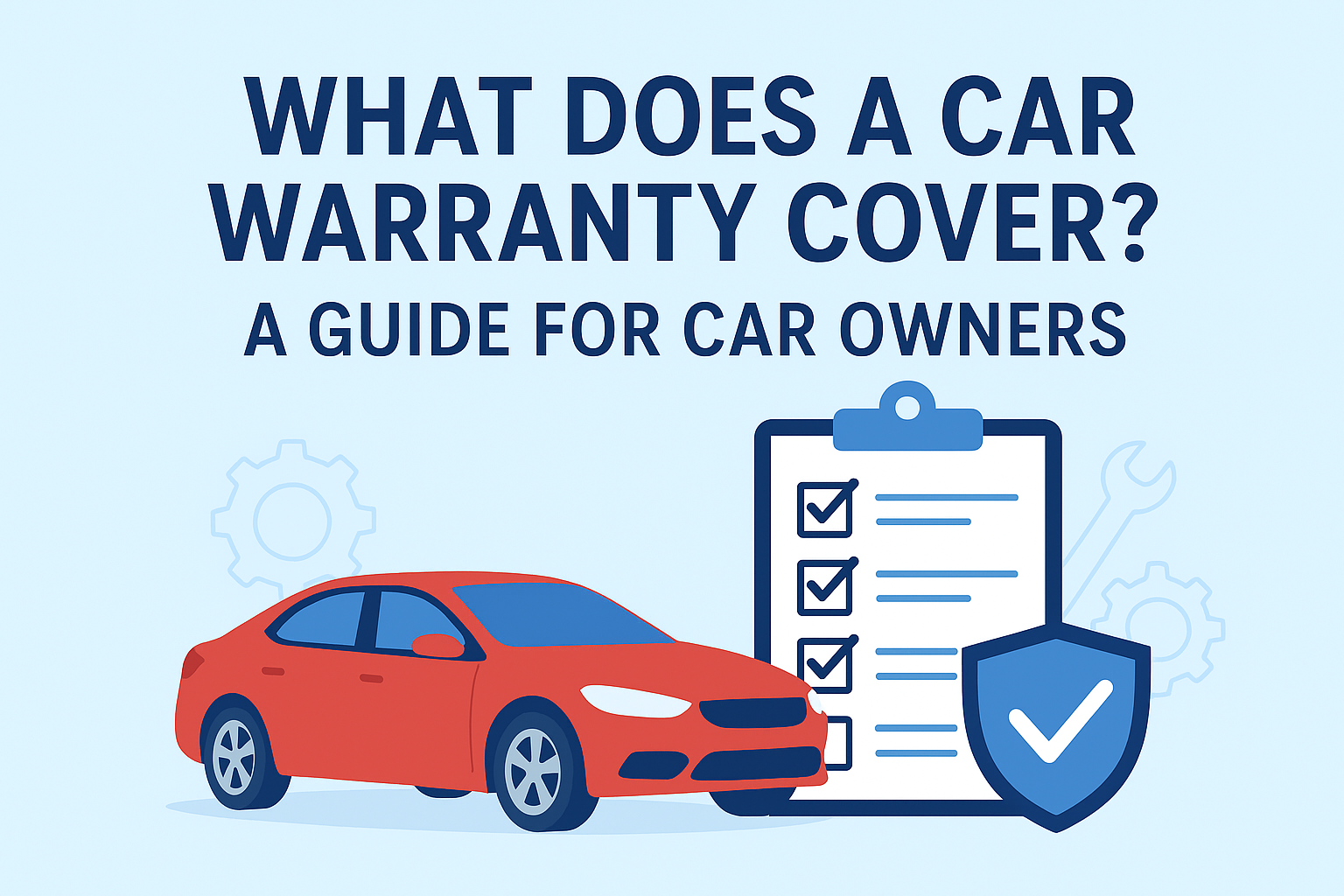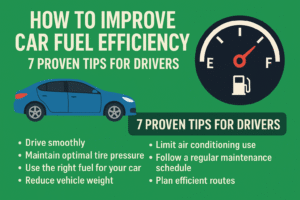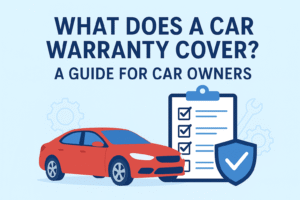Buying a car is one of the biggest investments you’ll make, and a car warranty is your safety net to protect that investment. But what does a car warranty cover, and how can you make the most of it? Whether you’re driving a new sedan, a used SUV, or an electric vehicle (EV), understanding car warranty coverage is crucial to saving money on repairs and maintaining your vehicle’s performance. This comprehensive guide explains everything you need to know about car warranties, from what they cover to common exclusions and expert tips to maximize benefits. Drawing insights from BuyingCarAssist’s Ultimate Car Care Guide, we’ll help you navigate warranties with confidence.
With repair costs for components like engines or transmissions often exceeding $1,000, a warranty can save you thousands. This guide covers warranty types, typical inclusions, exclusions, and actionable strategies to ensure you get the most value. Ready to become a warranty-savvy car owner? Let’s dive into this car warranty explained guide!
Want to ensure your car’s warranty works for you? Book a consultation with BuyingCarAssist for expert advice tailored to your vehicle!
What Is a Car Warranty?
A car warranty is a contract between the car manufacturer (or dealer) and the owner, promising to repair or replace specific components if they fail due to manufacturing defects or faulty materials within a set period. Warranties are designed to protect you from unexpected repair costs and ensure your vehicle remains reliable. They typically cover parts like the engine, transmission, and electrical systems, but the scope varies by warranty type and brand.
Key Features of a Car Warranty:
- Duration: Most warranties last 3-5 years or 36,000-60,000 miles (whichever comes first), though some brands offer longer terms (e.g., Kia’s 7-year warranty).
- Coverage: Includes repairs for defective parts, often at no cost to the owner, provided conditions are met.
- Transferability: Many warranties are transferable to new owners, boosting resale value.
- Conditions: Requires regular maintenance and use of authorized service centers to remain valid.
Understanding your warranty is the first step to avoiding costly repairs. Our Ultimate Car Care Guide offers detailed insights to help you stay compliant and save money.
Types of Car Warranties
Car warranties come in various forms, each covering different components and durations. Here’s a breakdown of the most common types:
Manufacturer’s Warranty
Also called a factory warranty, this is included with new cars and covers defects in materials or workmanship.
- Duration: Typically 3 years/36,000 miles, though some brands like Toyota or Hyundai offer 5 years/60,000 miles.
- Coverage: Engine, transmission, suspension, brakes, and electrical systems.
- Cost: Included in the car’s purchase price.
Extended Warranty
An optional add-on purchased from the manufacturer or a third-party provider, extending coverage beyond the factory warranty.
- Duration: Varies (e.g., 5-10 years or up to 100,000 miles).
- Coverage: Similar to factory warranties but may include additional components like electronics or hybrid systems.
- Cost: $500-$3,000, depending on the plan and vehicle.
Powertrain Warranty
Focuses on critical drivetrain components, ideal for long-term reliability.
- Duration: Often longer than standard warranties (e.g., 5-10 years/60,000-100,000 miles).
- Coverage: Engine, transmission, driveshaft, and related parts.
- Cost: Included in new cars; extended powertrain warranties may cost extra.
Certified Pre-Owned (CPO) Warranty
Offered for certified pre-owned vehicles, combining elements of factory and extended warranties.
- Duration: Typically 1-2 years beyond the original factory warranty.
- Coverage: Similar to factory warranties, often with roadside assistance.
- Cost: Included in the CPO vehicle’s price.
Confused about warranty types? Book a consultation with BuyingCarAssist to choose the best coverage for your car!
What Does a Car Warranty Typically Cover?
A car warranty typically covers repairs or replacements for defective parts due to manufacturing issues. The exact coverage depends on the warranty type, brand, and terms. Below is a detailed look at common inclusions:
Table: Common Car Warranty Coverages
| Component | Covered by Warranty? | Details |
| Engine | Yes | Covers internal components like pistons, crankshaft, and timing belt. |
| Transmission | Yes | Includes automatic/manual transmissions and clutch (if defective). |
| Electrical Systems | Yes | Covers wiring, alternator, starter motor, and infotainment (if defective). |
| Suspension | Yes | Includes shocks, struts, and control arms. |
| Brakes | Partial | Covers calipers and rotors; excludes brake pads (wear-and-tear item). |
| Air Conditioning | Yes | Covers compressor and condenser; excludes refrigerant refills. |
| Battery (EV/Hybrid) | Yes | Covers hybrid/EV batteries for 8-10 years in many cases. |
| Paint/Corrosion | Yes | Covers rust or paint defects due to manufacturing issues. |
Key Points:
- Defects Only: Warranties cover manufacturing defects, not damage from accidents, misuse, or neglect.
- Labor Costs: Most warranties cover labor at authorized service centers.
- Global Variations: Coverage may differ by region (e.g., US warranties often include emissions systems, while EU warranties emphasize corrosion).
For example, if your car’s engine fails due to a faulty piston within the warranty period, the manufacturer will cover the repair. However, if the failure is due to improper maintenance, the claim may be denied. Our Ultimate Car Care Guide helps you maintain your car to avoid warranty disputes.
What Is NOT Covered by a Car Warranty?
Understanding exclusions is just as important as knowing what’s covered. Most warranties do not cover:
- Wear-and-Tear Items: Brake pads, tires, wiper blades, and fluids (e.g., oil, coolant) wear out naturally and are excluded.
- Accident Damage: Repairs for collisions or external damage are covered by insurance, not warranties.
- Modifications: Aftermarket parts or modifications (e.g., tuning, custom rims) may void warranty coverage.
- Neglect or Misuse: Damage from skipping maintenance, off-roading (if not intended), or improper use isn’t covered.
- Cosmetic Issues: Minor scratches, dents, or upholstery wear are typically excluded unless caused by manufacturing defects.
- Environmental Damage: Rust or paint damage from road salt, floods, or neglect isn’t covered.
Example: If your brake pads wear out after 20,000 miles, you’ll pay for replacements (~$100-$300). However, if the brake caliper fails due to a manufacturing defect, the warranty should cover it.
Unsure about your warranty’s exclusions? Consult BuyingCarAssist experts to review your warranty terms and avoid surprises!
How to Maximize Your Car Warranty Benefits
Maximizing your warranty’s value requires proactive steps to stay compliant and leverage coverage effectively. Here are five expert tips to ensure you get the most out of your car warranty:
Tip 1: Understand Your Warranty Terms
Why It Helps: Knowing the duration, coverage, and conditions prevents claim denials.
- Action: Read the warranty booklet provided with your car. Note the duration (e.g., 3 years/36,000 miles), covered components, and maintenance requirements.
- Example: Some warranties require oil changes every 6 months to remain valid. Missing this could void engine coverage.
Pro Tip: Use our Car Consultation Services to have experts explain your warranty in simple terms.
Tip 2: Follow the Manufacturer’s Maintenance Schedule
Why It Helps: Regular maintenance, as outlined in your car’s manual, is often a condition for warranty validity. Skipping services can lead to denied claims.
- Action: Follow the recommended schedule (e.g., oil changes every 5,000-10,000 miles, tire rotations every 6 months).
- Example: A neglected air filter can cause engine issues, which may be excluded if maintenance was skipped.
Pro Tip: Check out our blog on How to Save Money on Car Maintenance for cost-effective maintenance tips.
Tip 3: Use Authorized Service Centers
Why It Helps: Most warranties require repairs at manufacturer-approved centers to ensure quality and compliance.
- Action: Find authorized service centers for your brand (e.g., Toyota, Ford, or Tesla). These centers use OEM parts and trained technicians.
- Example: Using a local garage for engine repairs may void your warranty if non-OEM parts are used.
Savings Estimate: Avoids $500-$5,000 in denied claims by staying compliant.
Tip 4: Keep Detailed Records
Why It Helps: Proof of maintenance is required for warranty claims, especially for major repairs.
- Action: Save receipts and service records for oil changes, tire rotations, and other maintenance. Use a digital app or folder for organization.
- Example: If your transmission fails, records of regular fluid checks can support your claim.
Pro Tip: Our Ultimate Car Care Guide includes a maintenance log template to simplify record-keeping.
Tip 5: Consider an Extended Warranty
Why It Helps: Extended warranties provide peace of mind for older cars or high-mileage vehicles.
- Action: Evaluate costs vs. benefits. For example, a $1,000 extended warranty could cover a $5,000 engine repair.
- Example: Brands like Hyundai offer extended warranties up to 7 years, ideal for long-term ownership.
Pro Tip: Use our Car Affordability Calculator to assess whether an extended warranty fits your budget.
How BuyingCarAssist Can Help
Navigating car warranties can be complex, but BuyingCarAssist simplifies the process with expert guidance and resources. Our Ultimate Car Care Guide provides detailed advice on warranty compliance, maintenance, and cost-saving strategies. Our consultation services (starting at $25) offer personalized support to:
- Review your warranty terms and exclusions.
- Create a maintenance plan to keep your warranty valid.
- Choose the best extended warranty for your needs.
Why Choose BuyingCarAssist?
- Expert Team: Our engineers and car experts provide real-world insights.
- Global Reach: Trusted by customers in the US, UK, UAE, and beyond.
- Actionable Tools: From calculators to guides, we help you save time and money.
Ready to maximize your warranty benefits? Book a consultation with BuyingCarAssist today for expert advice!
Frequently Asked Questions
Q: What does a car warranty cover?
A: A car warranty typically covers defects in the engine, transmission, electrical systems, and suspension. See our table above for details.
Q: Are wear-and-tear items covered by warranties?
A: No, items like brake pads, tires, and fluids are excluded as they wear out naturally. Learn more in our Ultimate Car Care Guide.
Q: Can I use any repair shop for warranty repairs?
A: Most warranties require authorized service centers to ensure OEM parts and compliance. Consult BuyingCarAssist to find trusted centers.
Q: Is an extended warranty worth it?
A: It depends on your car and driving habits. Use our Car Affordability Calculator to evaluate costs vs. benefits.
Q: How does maintenance affect my warranty?
A: Regular maintenance is required to keep warranties valid. Check our blog on How to Save Money on Car Maintenance for tips.
Conclusion
Understanding what a car warranty covers is essential for every car owner. From engines and transmissions to electrical systems, warranties protect you from costly repairs, but only if you follow the terms. By knowing inclusions, exclusions, and strategies to maximize benefits, you can save thousands while keeping your car in top shape. Whether you’re managing a factory warranty or considering an extended one, BuyingCarAssist’s Ultimate Car Care Guide and expert consultations provide the tools and advice you need.
Don’t let warranty confusion cost you money. Book a consultation with BuyingCarAssist now to ensure your warranty works for you!







